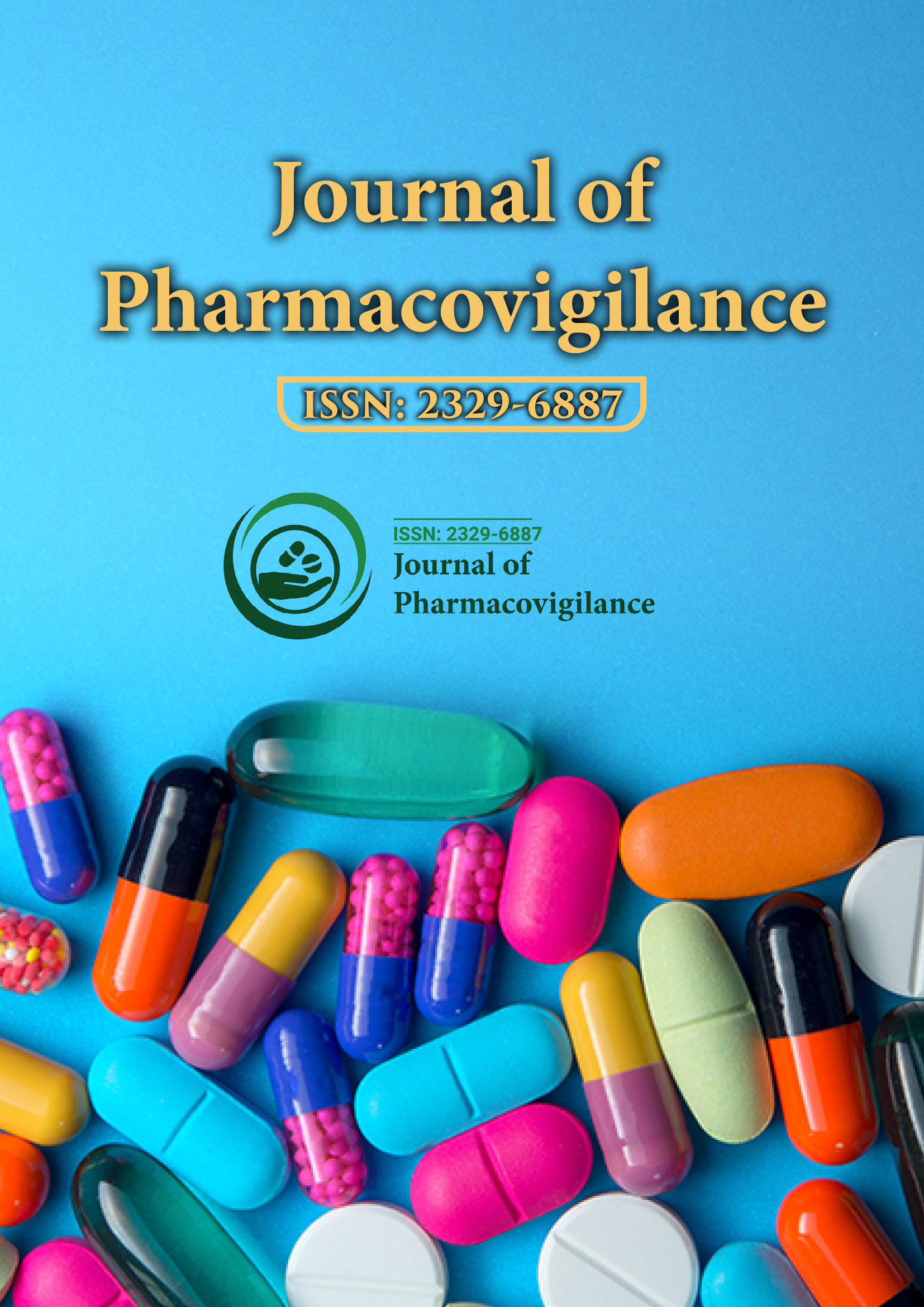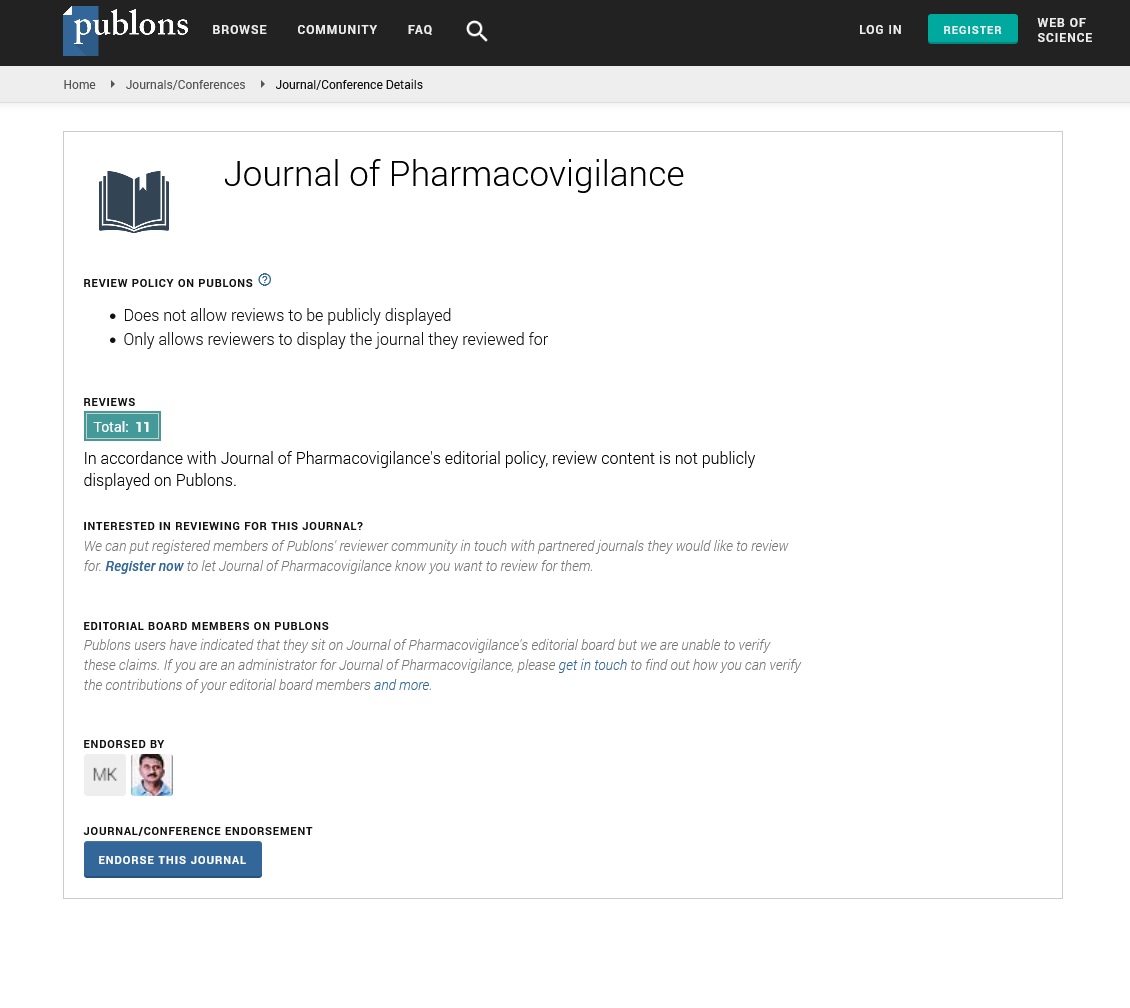Indexed In
- Open J Gate
- JournalTOCs
- The Global Impact Factor (GIF)
- RefSeek
- Hamdard University
- EBSCO A-Z
- OCLC- WorldCat
- Publons
- Euro Pub
- Google Scholar
Useful Links
Share This Page
Journal Flyer

Open Access Journals
- Agri and Aquaculture
- Biochemistry
- Bioinformatics & Systems Biology
- Business & Management
- Chemistry
- Clinical Sciences
- Engineering
- Food & Nutrition
- General Science
- Genetics & Molecular Biology
- Immunology & Microbiology
- Medical Sciences
- Neuroscience & Psychology
- Nursing & Health Care
- Pharmaceutical Sciences
Opinion - (2021) Volume 9, Issue 11
An Overview on Drug Interaction and its Various Types used in Current Times
Catherine Paul*Received: 01-Nov-2021 Published: 23-Nov-2021
Medication collaboration is an adjustment of the activity or symptoms of a medication brought about by accompanying organization with a food, drink, supplement, or another drug. A reason for medication collaboration includes one medication which adjusts the pharmacokinetics of another clinical medication. Then again, drug cooperations result from rivalry for a solitary receptor or flagging pathway. Both cooperative energy and opposition happen during various periods of the collaboration between a medication and a creature. For instance, when collaboration happens at a cell receptor level this is named agonism, and the substances included are named agonists. Then again, on account of opposition, the substances included are known as reverse agonists. The danger of a medication drug association increments with the quantity of medications used. Over a third (36%) of the older in the U.S. routinely utilizes at least five prescriptions or supplements, and 15% are in danger of a critical medication drug connection [1].
Types of Drug Interactions
Pharmacodynamic Interaction
At the point when two medications are utilized together, their belongings can be added substance (the outcome is the thing that you expect when you include the impact of each medication taken autonomously), synergistic (joining the medications prompts a bigger impact than anticipated), or adversarial (consolidating the medications prompts a more modest impact than expected). There is in some cases disarray on whether medications are synergistic or added substance, since the singular impacts of each medication might shift from patient to patient. A synergistic connection might be gainful for patients, however may likewise expand the danger of excess. Drug collaboration indicators empower hazard appraisal of numerous medications at the same time with perceptions hazard per remedial classes, to show a range from no danger to high risk. Both cooperative energy and opposition can happen during various periods of the collaboration between a medication, and a life form. The various reactions of a receptor to the activity of a medication have brought about various orders, for example, "halfway agonist", "cutthroat agonist" and so forth these ideas have principal applications in the pharmacodynamics of these cooperations. The expansion of existing characterizations at this level, alongside the way that the specific response systems for some, drugs are not surely known implies that it is beyond difficult to offer an unmistakable grouping for these ideas. It is even conceivable that many creators would twist any given classification [2].
Direct connections between drugs are likewise conceivable and may happen when two medications are blended before intravenous infusion. For instance, blending thiopentone and suxamethonium in a similar needle can prompt the precipitation of thiopentone. The adjustment of a living being's reaction upon organization of a medication is a significant component in pharmacodynamic connections. These progressions are phenomenally hard to order given the wide assortment of methods of activity that exist, and the way that many medications can cause their impact through various components. This wide variety likewise implies that, in everything except the most clear cases explore, and comprehend these instruments. The all-around established doubt exists that there are more obscure communications than known ones.
Pharmacokinetic Interactions
Alterations in the impact of a medication are brought about by contrasts in the assimilation, transport, conveyance, digestion or discharge of either of the medications contrasted and the normal conduct of each medication when taken exclusively. These progressions are essentially alterations in the centralization of the medications. In this regard, two medications can be homergic in the event that they have a similar impact in the living being and heterergic assuming their belongings are unique [3].
Herb-drug Interactions
Herb-drug Interactions are drug collaborations that happen between home grown medications and regular drugs. These kinds of connections might be more normal than drug-drug communications since natural prescriptions frequently contain various pharmacologically dynamic fixings, while ordinary medications ordinarily contain just one. Some such connections are clinically significant, although most natural cures are not related with drug associations causing genuine consequences. Most spice drug communications are moderate in severity. The most usually ensnared customary medications in spice drug associations are warfarin, insulin, headache medicine, digoxin, and ticlopidine, because of their limited helpful indices. The most generally embroiled spices associated with such communications are those containing St. Johns Wort, magnesium, calcium, iron, or ginkgo [4].
REFERENCES
- Moore N, Biour M, Paux G, Loupi E, Begaud B, Boismare F, et al. Adverse drug reaction monitoring: Doing it the French way. Lancet. 1985; 2:1056–8.
- Bordet R, Gautier S, Le Louet H, Dupuis B, Caron J. Analysis of the direct cost of adverse drug reactions in hospitalised patients. Eur J Clin Pharmacol. 2001; 56:935–41.
- Gallelli L, Ferreri G, Colosimo M, Pirritano D, Guadagnino L, Pelaia G, et al. Adverse drug reactions to antibiotics observed in two pulmonology divisions of catanzaro, Italy: A six-year retrospective study. Pharmacol Res. 2002; 46:395–400.
- Franceschi A, Tuccori M, Bocci G, Vannozzi F, Di Paolo A, Barbara C, et al. Drug therapeutic failures in emergency department patients. A university hospital experience. Pharmacol Res. 2004;49:85–91.
Citation: Paul C (2021) An Overview on Drug Interaction and its Various Types used in Current Times J Pharamacovigil 9:346. doi10.35248/2329-6887.21.9.346.
Copyright: © 2021 Paul C. This is an open-access article distributed under the terms of the Creative Commons Attribution License, which permits unrestricted use, distribution, and reproduction in any medium, provided the original author and source are credited.

